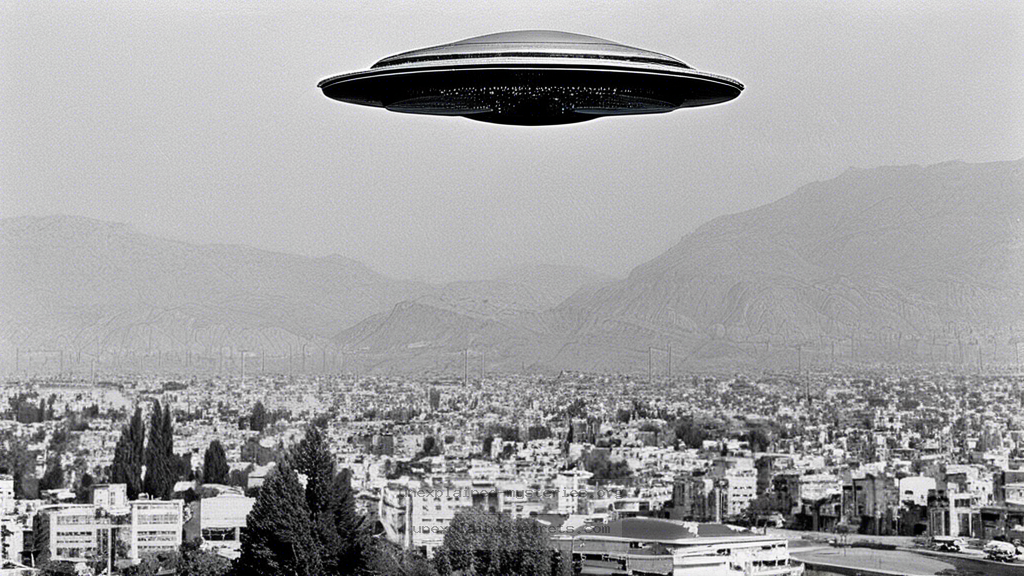What Really Happened During the 1976 Tehran UFO Incident?
What Really Happened During the 1976 Tehran UFO Incident?
The 1976 Tehran UFO incident remains one of the most compelling and unexplained mysteries related to unidentified flying objects (UFOs) and potential extraterrestrial encounters. This event not only involved military personnel and radar technology but also sparked debates about government secrecy and the existence of alien life. As we delve into this incident, we unravel the layers of confusion and skepticism that continue to surround it, providing insights into why this event matters and what it reveals about our understanding of the universe.
Historical Context
The Tehran UFO incident occurred on September 19, 1976, amidst a backdrop of political turmoil in Iran, as the country was on the brink of the Islamic Revolution. The Iranian military was equipped with advanced technology and was actively monitoring the airspace during this critical period. It was in this environment that several Iranian Air Force pilots reported seeing strange lights in the night sky, which led to a series of military engagements.
As tensions mounted, the reports of unidentified aerial phenomena (UAP) prompted military officials to scramble fighter jets to intercept the objects. The events that unfolded that night were documented both by the pilots involved and by radar operators at the time. This incident stands out not only for its military implications but also for its potential implications regarding extraterrestrial life.
The Incident Unfolds
On the night of the incident, two F-4 Phantom II fighter jets were dispatched from Shahrokhi Air Base to investigate the UFOs. Initial radar detection indicated that an unidentified object was present in the vicinity. As the jets approached the coordinates, the pilots reported seeing bright lights that displayed erratic movements—an attribute that defied conventional aircraft capabilities.
One of the pilots, Colonel Parviz Jafari, described how as he attempted to lock on to the target using his aircraft’s weapons system, his instruments began to malfunction. Each time he got close, the mysterious object would seem to move away, evading capture. This prompted further investigation and a sense of urgency about the nature of the phenomenon. 🚀
Core Concepts and Theories
The Tehran incident raises several core concepts regarding UFOs and the possibility of extraterrestrial life. One prominent theory is that what the Iranian pilots experienced was not of this Earth. The characteristics of the objects—speed, maneuverability, and the ability to disrupt electronic systems—are consistent with many contemporary descriptions of UAPs.
Another theory suggests that these sightings could be attributed to natural phenomena, such as atmospheric anomalies or misidentified aircraft. However, the detailed accounts of the pilots and radar operators lend credibility to the idea that something extraordinary was occurring that night.
Practical Implications and Evidence
The implications of the Tehran UFO incident extend into various domains, including military readiness, national security, and the potential need for scientific investigation of UAPs. The United States and other nations have engaged in extensive research on UFOs, but many classified documents remain inaccessible to the public, leading to speculation about what governments may know.
- Multiple radar confirmations from different locations
- Eyewitness accounts from trained military personnel
- Flight data indicating unusual maneuvers
Despite the evidence presented, skepticism remains prevalent, often fueled by the lack of conclusive explanations. The release of declassified documents regarding other UFO sightings has only intensified interest in the Tehran incident, as many seek to connect the dots between these occurrences and broader questions about extraterrestrial life.
Alternative Perspectives
While many view the Tehran incident through the lens of potential extraterrestrial life, alternative perspectives exist that emphasize psychological and sociocultural factors. Some argue that the pilots may have experienced a collective hallucination or that the intense stress of the political climate contributed to misinterpretations of ordinary phenomena.
Furthermore, the political environment of Iran at the time—marked by the impending revolution—may have influenced perceptions of the event. By exploring these alternative explanations, we gain a more nuanced understanding of how human psychology and societal context can shape experiences of the unknown.
Common Misconceptions and Clarifications
Several misconceptions surround the Tehran UFO incident, often propagated by media sensationalism. One common fallacy is the belief that the pilots engaged in combat with an extraterrestrial craft. However, the lack of physical evidence and the absence of any confirmed engagement with a hostile entity suggest that the reality was more complex.
Another misconception is that the incident was a hoax or fabrication. The credibility of the military personnel involved, along with the detailed documentation of events, counters this narrative. It is essential to differentiate between sensationalized accounts and the factual basis of the incident to avoid misunderstanding its significance.
Best Practices for Investigation and Study
For those interested in studying UFO phenomena, including events like the Tehran incident, a systematic approach is essential. Here are a few best practices to consider:
- Gather credible eyewitness testimonies from various sources.
- Utilize scientific methods for analyzing physical evidence.
- Consult existing literature and research on UAPs.
- Engage with experts in military, aviation, and atmospheric sciences.
- Maintain a skeptical yet open-minded perspective to avoid biases.
By adhering to these practices, researchers can contribute to a more comprehensive understanding of UFO sightings and their implications for humanity.
Future Developments and Ongoing Research
The interest in UFOs has seen a resurgence in recent years, with government agencies like the Pentagon releasing previously classified information. Ongoing research into UAPs, including the establishment of task forces and academic studies, aims to shed light on phenomena like the Tehran incident.
As technology advances, opportunities to capture and analyze data on UFO sightings improve. The development of satellite technology and enhanced radar systems may lead to new insights into unexplained aerial phenomena, potentially leading to breakthroughs in understanding the nature of these encounters.
Conclusion
The 1976 Tehran UFO incident serves as a pivotal moment in the study of unidentified flying objects and the broader implications of extraterrestrial encounters. Through a careful examination of historical context, eyewitness accounts, and alternative theories, we gain a clearer perspective on the complexities surrounding this event.
While skepticism remains a healthy part of any inquiry, the evidence presented in the Tehran incident invites us to consider possibilities beyond our current understanding of the universe. As research continues and new technologies emerge, the truth behind these sightings may one day be revealed, reshaping our understanding of what lies beyond our planet. 🌌
Other Articles
Recent Posts
- What Happened to Flight MH370? The Conspiracy Theories That Still Haunt Us
- What Secrets Lurk Within the Walls of the Infamous Trans-Allegheny Lunatic Asylum?
- What Evidence Supports the Existence of Bigfoot in the Pacific Northwest?
- What Happened to the Indus Valley Civilization? Unraveling the Mysteries of Ancient Urban Life
- Can Telepathy Be Scientifically Proven Through Laboratory Evidence?







